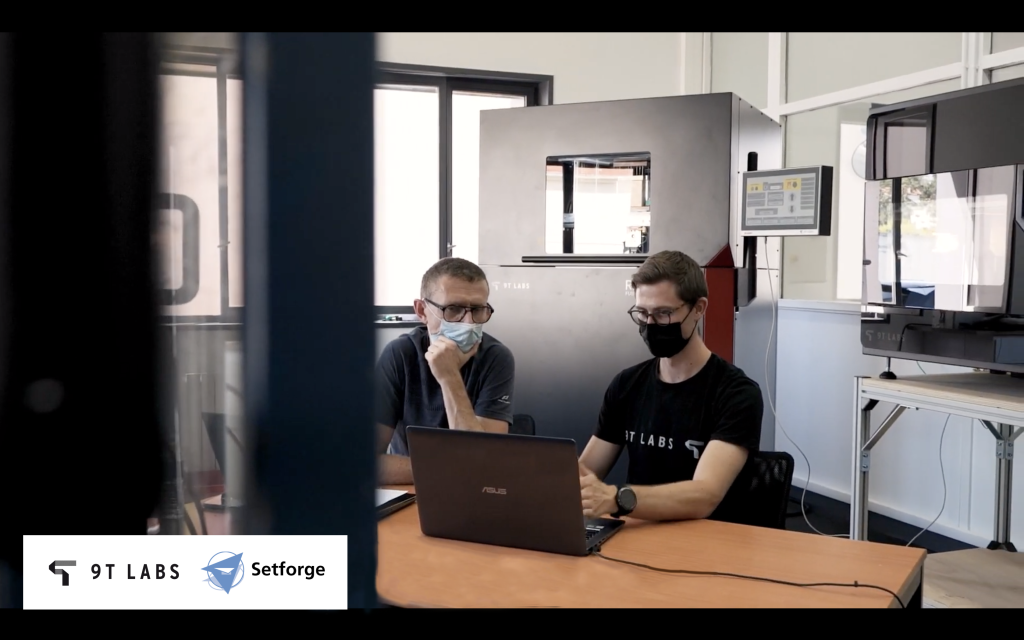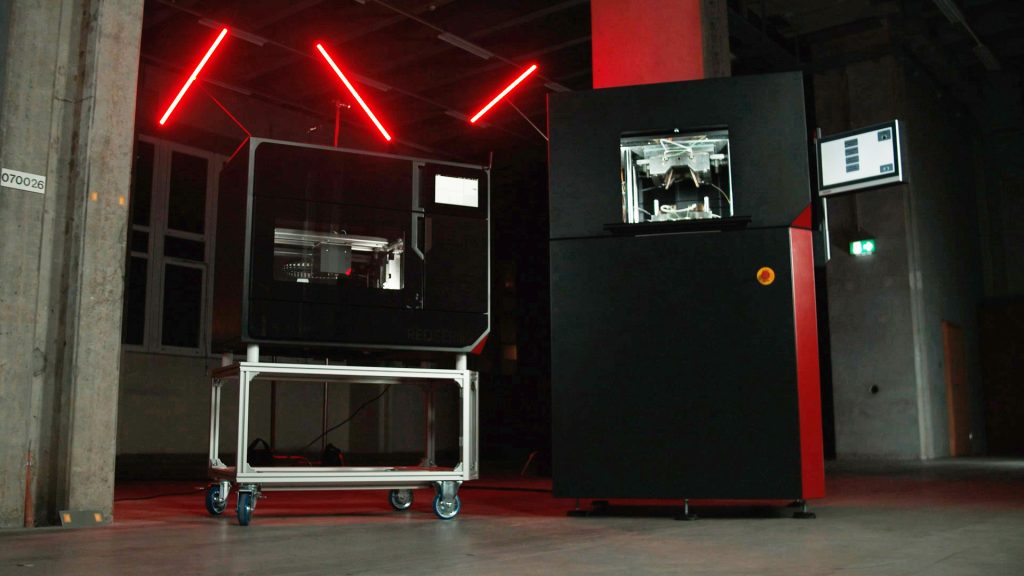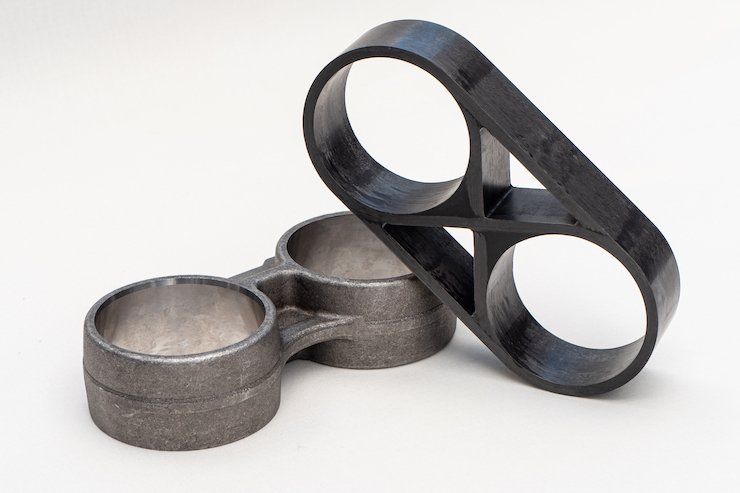France-based industrial part supplier Setforge has begun developing new series production applications using additive manufacturing technology developed by 9T Labs.
Setforge is a specialist in conventional forging and machining processes, having provided high-volume metal components to industries like automotive and aerospace for over 100 years.
In a bid to innovate and adapt, the firm recently invested in 9T Labs’ Red Series 3D printer, a hybrid system that enables the production of carbon fiber-reinforced composite parts. Setforge is now in the process of screening for new 3D printing applications to replace steel, aluminum, and titanium parts with lightweight and low-cost composite alternatives.
“We are proud to support a venerable yet innovative company like Setforge as they begin manufacturing carbon composite parts,” said Giovanni Cavolina, co-founder and CCO of 9T Labs. “We started 9T Labs with a passion to mass-produce high-performance composites as easily as metals. We have found Setforge to be just as passionate about disruptive manufacturing of high-performance parts.”

9T Labs’ Red Series 3D printing platform
9T Labs’ Red Series Additive Fusion Solution is an end-to-end 3D printing package that includes hardware, software, and engineering support services. The backbone of the product is the company’s Build Module, an extrusion-based fiber layup 3D printer designed specifically for carbon fiber-reinforced thermoplastic composites. The Build Module is typically used in conjunction with the Fusion Module, a compact compression press, to achieve fiber consolidation.
On the software side, the Red Series Additive Fusion Solution also includes 9T Labs’ Fibrify software. The program enables users to import 3D CAD files, design composite parts, and optimize fiber layups, while also integrating with third-party structural analysis programs to allow for structural performance verification.
Suitable for both functional prototyping and high-volume end-use production, the technology is compatible with a whole host of reinforced materials, including PA12, PPS, PEKK, and PEEK.
Damien Felix, R&D Project Manager at Setforge, adds, “9T Labs’ expertise in composites helps us to identify the right application and to design load-tailored parts easily. We can even place metal inserts, if needed, before we densify the fibers and reduce porosity. We end up with finished, net-shape parts with high fiber ratios and low porosity that carry four-times higher specific load than steel.”

Up to 5000 composite parts a year
Equipped with its newly acquired composite 3D printing technology, Setforge will be able to 3D print parts up to 350mm x 270mm x 250mm in size in quantities of up to 5,000 per year. The company has also expressed plans to ramp up capacity leading into 2023 and beyond, eventually producing composite 100,000 parts annually at its facility in L’Horme, France.
Felix concludes, “With the Red Series, we want to propose to replace metal parts with composites for our current markets like automotive or aerospace, but we also want to propose innovative solutions for new markets to us — for example luxury goods, sports, medical, exoskeletons like wearable ergonomic lift-assist systems, and drones.”

Also operating in the composite space, 3D printing materials provider CRP Technology recently used its Windform SP carbon fiber material to 3D print an innovative athletics track shoe. Named Pleko, the 3D printed spike shoe was developed in collaboration with Venetian middle-distance runner Miro Buroni and is designed to be resistant to deformation even at its thinnest thicknesses while remaining flexible.
Elsewhere, in the large-format market, Israeli 3D printer manufacturer Massivit 3D recently launched a new machine that’s specifically designed for the production of huge composite molds. Powered by the firm’s Cast-In-Motion (CIM) technology, the Massivit 10000 enables users to create intricate tooling in a rapid four-step gel dispensing and casting process, which simplifies the molding workflow.
Subscribe to the 3D Printing Industry newsletter for the latest news in additive manufacturing. You can also stay connected by following us on Twitter, liking us on Facebook, and tuning into the 3D Printing Industry YouTube Channel.
Looking for a career in additive manufacturing? Visit 3D Printing Jobs for a selection of roles in the industry.
Featured image shows the 9T Labs Red Series Build Module (left) and Fusion Module (right). Photo via 9T Labs.



